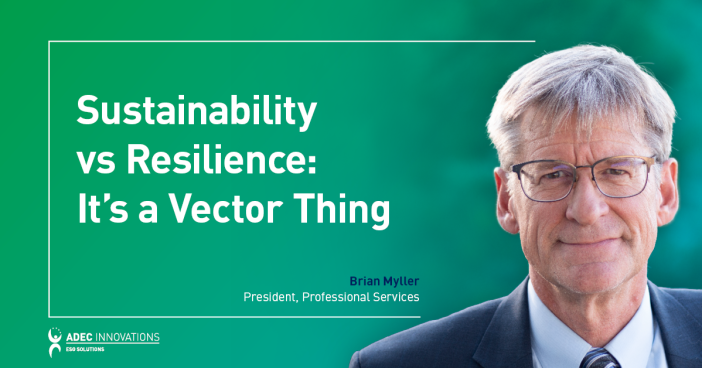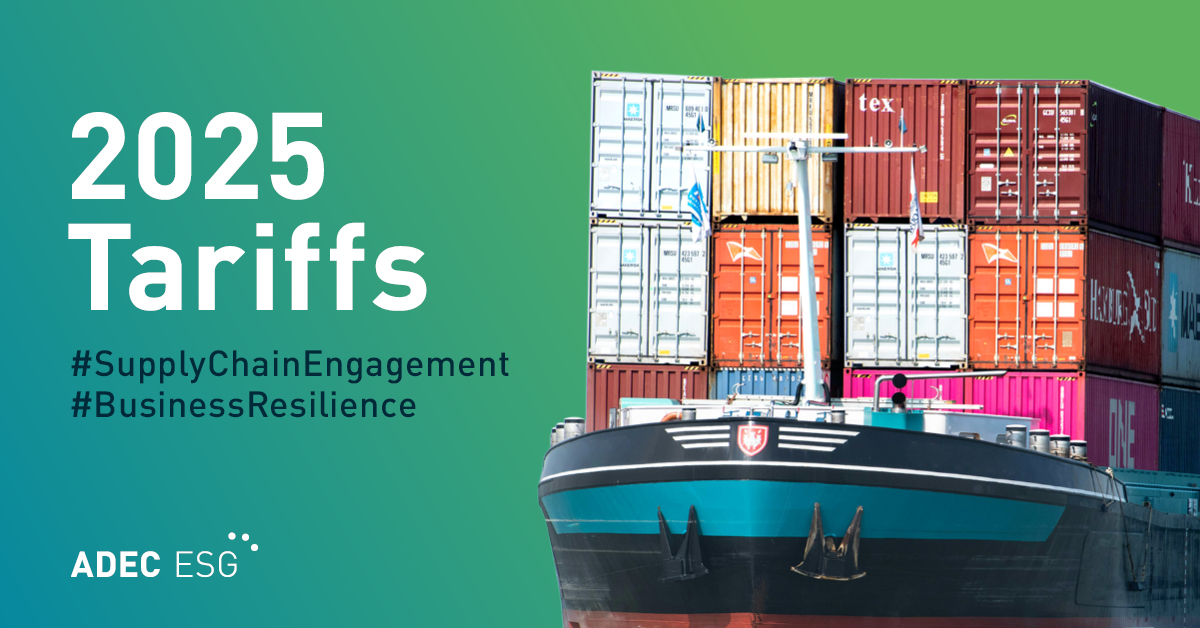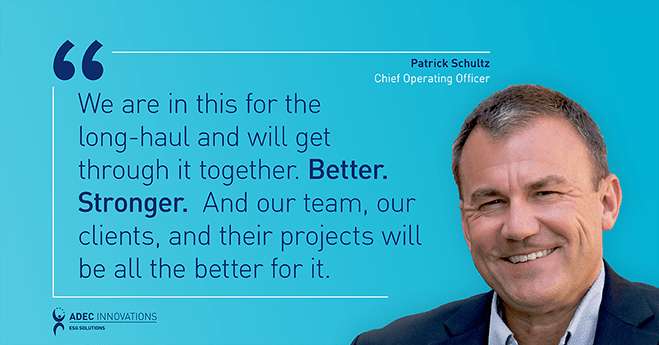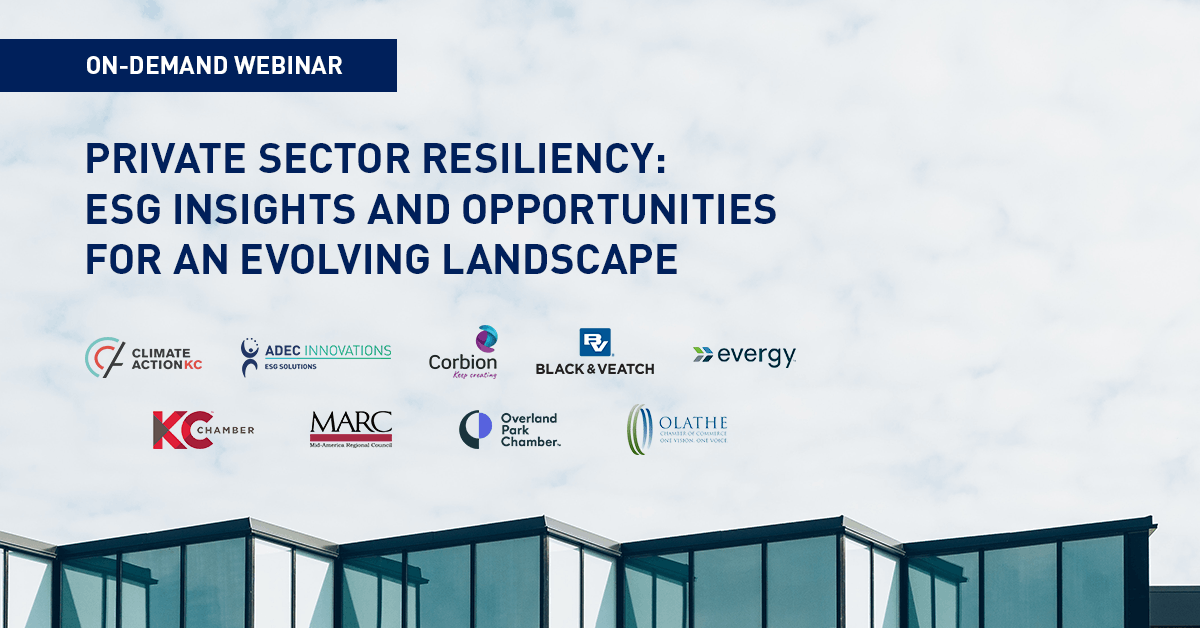My first recollection of sustainability was when the color of the napkins at the ski area near my childhood home switched to tan. Prior, they were always white and the word sustainable was not printed anywhere on the material or packaging. While the brown napkins did not seem quite as absorbent, they still got most of the hot chocolate off my face before heading out for another run.
While in college, I noted other products claiming to be sustainable—laundry detergent, food, coffee, and carpet, for example. Because I wanted a career that would help protect people, water, and the environment, my coursework included hydrogeology and environmental science.
A decade into my environmental career, I saw resilience emerge as a prominent term. This coincided with a series of major floods, forest fires, terrorism, and hurricanes.
Today, an internet search reveals a range of definitions for sustainability and resilience. Many of these definitions suggest the terms are synonymous. Much written content uses the terms interchangeably, and casually mixes them with other terms, like environmental, decarbonization, social sustainability, biodiversity, ESG, ecosystem…the list goes on. This can be confusing to the layperson, and may cause organizations, clients, the public—and even consultants—to view and manage environmental, social, and business risk in siloed, piecemeal ways.
Rather than provide lengthy comparisons and debate definitions for sustainability and resilience, an understanding of direction of impact can help simplify and clarify their meaning and relationship. Picture a landscape exhibiting land, water, air, and biota (animal and plant life). We’ll refer to this as the environmental system. Now place human communities, the social system, onto the environmental system they need to survive. Then place your business or organization on top of these supporting and surrounding environmental and social systems.
If we use arrows that represent the impacts your organization has on the surrounding and supporting environmental and social systems, they originate at various places in and around your organization, pointing at specific receptors and points of associated impact. Green arrows represent positive impacts; red arrows represent negative impacts. The collective of these arrows reflects how sustainable your organization is—its impact on the surrounding and supporting social (stakeholders) and environmental (natural resources) systems. The greater number of green arrows the organization contributes, the more sustainable the organization is.


Now picture similar arrows coming in toward the organization, rather than outgoing. These arrows represent impacts that the environmental and social systems can have on your organization’s ability to prosper—its resilience. Blue arrows represent impacts that help your organization grow and prosper; perhaps positive word of mouth from pleased customers. Yellow arrows represent impacts that threaten or impair your organization by way of lawsuits, catastrophic weather events, derogatory communications from stakeholders, etc. The most resilient organizations work to minimize the yellow arrows, while protecting against and recovering from those that remain.


While this idea of outgoing and incoming impacts as a reflection of sustainability and resilience helps simplify the meaning of these terms, it also reveals the importance of understanding the workings of, and interactions between, a range of sciences (climate, biology, cultural resources, hydrogeology, soil, supply chain, socioeconomics, emissions, branding, infrastructure, data/information, energy, material), accounting, and business operations to help organizations become most sustainable and resilient.
Starting with our conceptual model of these influences we can begin to identify the science and business factors that impact an organization’s health. And, from there, we can develop and execute a strategy that improves both its sustainability and resiliency.
ADEC ESG Solutions is a leading provider in fully integrated environmental and sustainability solutions. We help organizations at every stage of their Sustainability Journey to reshape risk into positive impact and value. For the latest industry insights on sustainability and resiliency, subscribe to our monthly newsletter, GreenWatch.




